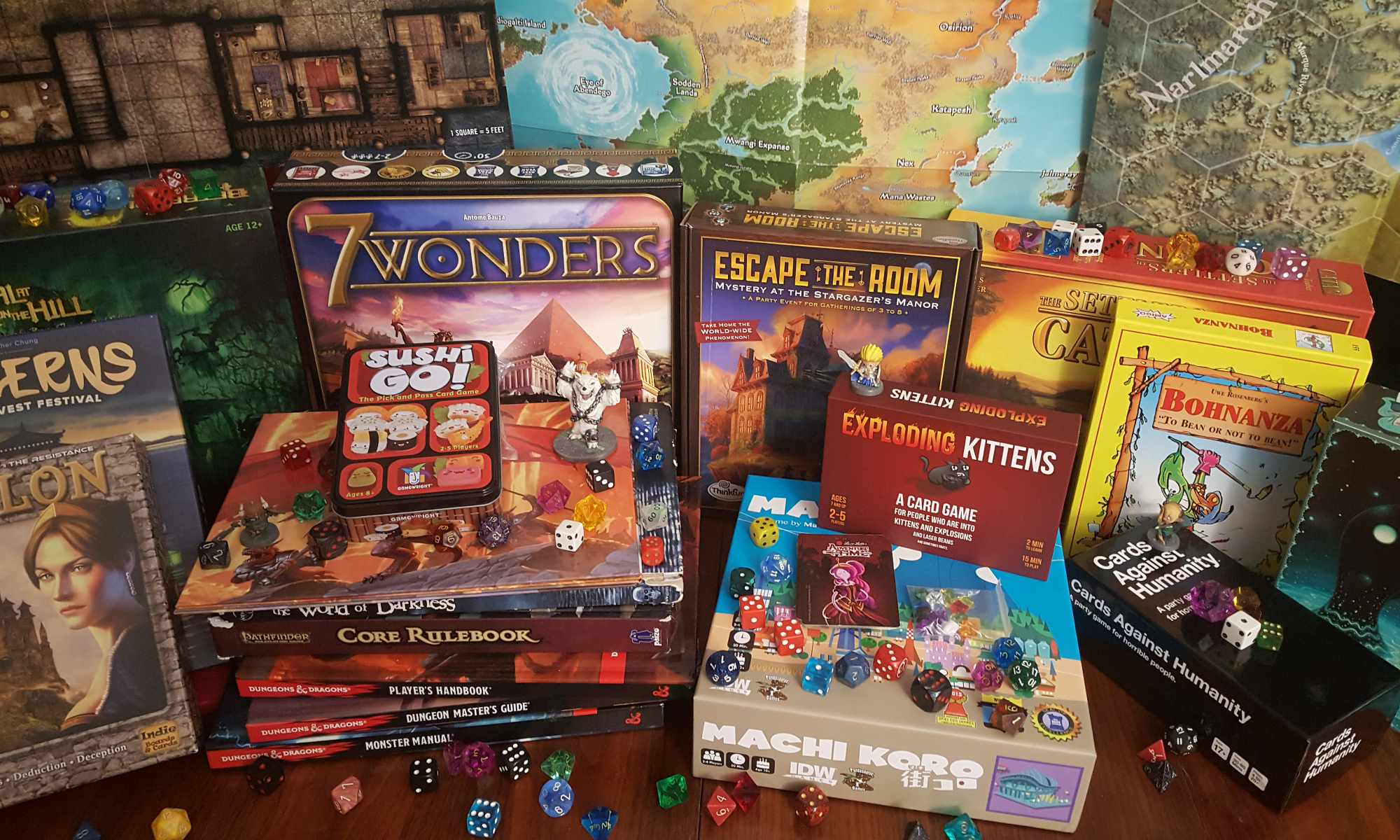What’s a gaming group to do when you feel like your favorite games are played out? The answer may be “find a new game,” but it might also be “get an expansion!” Today’s Save Vs. Rant is about expansions – their history, what kind of expansions exist, the advantages – and disadvantages – of each, and why they may or may not be right for your gaming group.
We already explained, when last we considered broaching this very broad topic, that we did not want this to just be an episode listing what expansions we like. After all, you can get that information from a much larger aggregate of sources on BoardGameGeek.com or just by reading reviews on Amazon.com. Instead, we wanted to discuss the different kinds of Expansions and what makes them tick.
Some games were explicitly meant to be expanded from their creation. The original Hero Quest contained a blank quest sheet that you could use to plan out a custom quest. Flux, Cards Against Humanity and many other games contain blank cards, sometimes intended as proxies for lost cards, other times explicitly intended to give you an opportunity to expand the game. One of the major problems of such blank cards, however, is that your custom content will frequently fail to match both the tone and art style of the original game. Unless you’re an accomplished artist, you’ll probably bet left with content that is substantially inferior to the original.
One kind of content that is often easy to add in expansions is maps. Consider Ticket to Ride. While its games are all technically sequels (and each one contains at least one unique game mechanic), the principle of map-based expansion is in full effect. The most obvious and significant difference between the Ticket to Ride Games are, in fact, the maps. Likewise, there is a major box expansions for Small Worlds that allows you to use map tiles to create unique worlds for greater replayability. Captain Sonar likewise gets a lot of mileage out of just having additional maps to play on.
For games with selectable characters, classes, equipment, skills, spells or other RPG elements, it’s often a fairly simple matter to expand the roster or inventory with more items. Super Dungeon Explore, Arkham Horror, Tannhauser, Cash and Guns, Dead of Winter, Sentinels of the Multiverse and Small World all have expansions that capitalize on this. In some cases, the same can be done with the monsters or enemies in the game – variety is, after all, the spice of life. The major flaw in this approach, though, is that the more things you add to the game, the more you water down any existing themes in the game and the more likely you are to completely break the balance in the game.
Stand-alone expansions are relatively rare, which is a shame, given that a well-crafted stand-alone expansion typically provides at least two new ways to play the game (in some cases more, depending on how modular the components are).
An interesting aside to all this is roleplaying games which have been providing expansions and additional content since their creation. Consider, though, the recent curious case of D&D 4e. Partially in response to backlash against the homogenous nature of the player character classes in the Player’s Handbook, two additional stand-alone handbooks were released – Heroes of the Forgotten Kingdoms, and Heroes of the Fallen Lands. Each reintroduced classes that had already been introduced to the game in a manner that was not necessarily intended to replace them, but provide an alternate interpretation of them for players dissatisfied with the originals. I personally liked these interpretations of the classes far more than the ones presented in the Player’s Handbook and, had 4th Edition opened with these versions, I may have had a somewhat more forgiving attitude towards it.
Adding an additional element to the game, as is done in Potion Explosions’ Fifth Ingredient and Five Tribe’s Artisans expansion, can make for a pretty spectacular change in gameplay, but is a risky venture to say the least given how much it shakes up the delicate balance of the game. Still, these games pull it off in a way of which we here at SVR think other companies should stop and take notice.
One game with a nearly endless series of expansions that all seem to “work” in a fundamental way is Cards Against Humanity. While adding more cards to a giant game of CAH may water down some of the more subtle jokes (for instance, you’re far less likely to have players play “Bees?” and “BEES!” on the same turn) it does reduce the frequency of some of the more played out ones (“Mecha Hitler” is pretty much a cheat code to win on any given round). A lot of these sort of improvisational discussion games are both officially and fan expandable for this reason (Superfight, Apples to Apples, et al). If you really want to go hardcore with expansion, you can always play 1000 Blank White Cards, which is, in perpetuity, available from your local office supply store.
As a final, almost completely unrelated note, is it weird that Monopoly released their Stock Market expansion in 1934 – during the Great Depression? I just… I feel like that’s in poor taste. Perhaps only those who were mostly intact after the crash could afford board games, which would, obviously result in them being the ones least distressed by the crash. Still, I doubt the Irish were making any games about farming in 1849.

